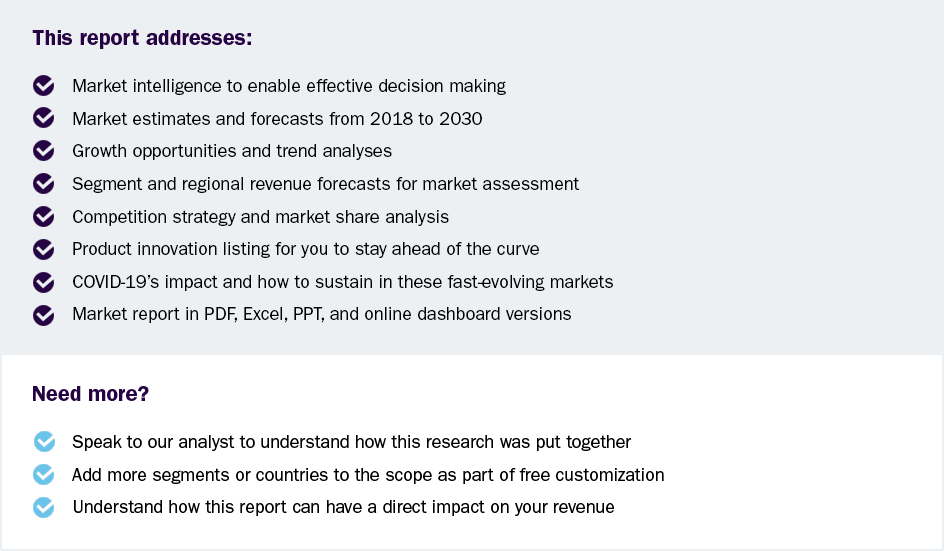Ballistic Composites Market Size To Reach $3.10 Billion By 2030
Ballistic Composites Market Growth & Trends
The global ballistic composites market size is expected to reach USD 3.10 billion by 2030, registering a CAGR of 8.4% from 2024 to 2030, according to a new report by Grand View Research, Inc. Unstable geopolitical relations, increasing cross-border tensions have forced nations to strengthen their defense units. Providing lightweight, efficient and advanced combat equipment has been on top priorities of most of the developed as well as developing countries. This has triggered the use of ballistic composites over the past few years.
Several factors, like the propensity of the composite armor of supporting the weight of an externally attached component, anchoring composite armor with a platform, safeguarding of ballistic weaknesses at panel joints and corners are taken into consideration while product designing and production are executed.
Ballistic vests are envisioned to deflect bullets from several types of guns, while armored vehicles must withstand projectiles, shells fired from tanks and roadside bombs. The layout of ballistic materials thus presents challenges familiar to any composites manufacturer.
North America is slated to account for larger market share. Active involvement of the U.S. military to counter terror threats is expected to fuel the product demand. Rising pressure on the U.S. government to maintain its military dominance is also expected to drive the regional market.
The key value chain components for the ballistic protective equipment market include raw material suppliers, ballistic equipment manufacturers, and end-users. The raw material suppliers form the first component in the value chain and provide various metals, materials, and fabrics required for producing ballistic protection suits.
Major companies in the global ballistic composites market include DuPont, Teijin, DSM and Honeywell International. The market can be characterized by increasing R&D spending and continuous efforts for new product development.
 Request a free sample copy or view report summary: Ballistic Composites Market Report
Request a free sample copy or view report summary: Ballistic Composites Market Report
Ballistic Composites Market Report Highlights
-
The polymer matrix composite segment dominated the market in 2023 with a share of 49.5% owing to properties offered by polymer matrix such as low-weight features, and robust performance.
-
Vehicle armor dominated the market in 2023 with a share of 40.6%. The rising usage of ballistic composites for vehicle protection and the increased prevalence of terrorism, armed conflicts, and security threats have led to the segment growth.
-
North America dominated with a market share of 39.0% in 2023 pertaining to a high number of military and police personnel and high budgets for defense spending.
Ballistic Composites Market Segmentation
Grand View Research has segmented the global ballistic composites market on the basis of on raw material, application, and region:
Ballistic Composites Raw Material Outlook (Revenue, USD Million, 2018 - 2030)
-
Polymer Matrix Composite
-
Polymer-Ceramic Matrix Composite
-
Metal Matrix Composite
Ballistic Composites Application Outlook (Revenue, USD Million, 2018 - 2030)
-
Vehicle Armor
-
Body Armor
-
Helmets & Face Protection
-
Others
Ballistic Composites Regional Outlook (Revenue, USD Million, 2018 - 2030)
-
North America
-
U.S.
-
Canada
-
Mexico
-
-
Europe
-
UK
-
Germany
-
France
-
Italy
-
Spain
-
-
Asia Pacific
-
China
-
Japan
-
India
-
-
Latin America
-
Brazil
-
Argentina
-
-
Middle East and Africa (MEA)
-
Saudi Arabia
-
South Africa
-
List of Key Players in the Ballistic Composites Market
-
Honeywell International Inc.
-
TEIJIN LIMITED
-
BAE Systems
-
DuPont
-
Avient Corporation
-
Morgan Advanced Materials
-
3M
-
Saint-Gobain Performance Plastics Corporation
-
TenCate Fabrics
-
Gurit Services AG

